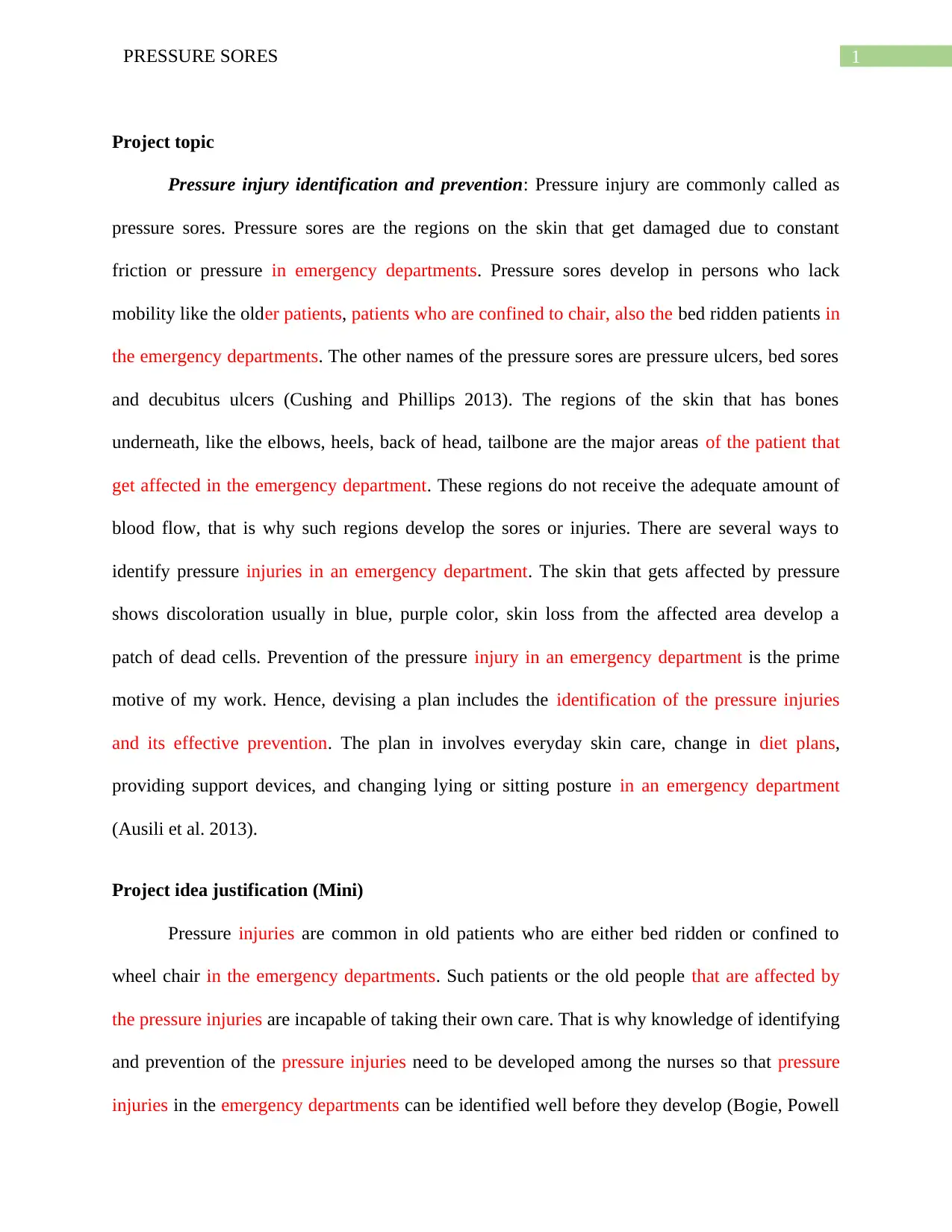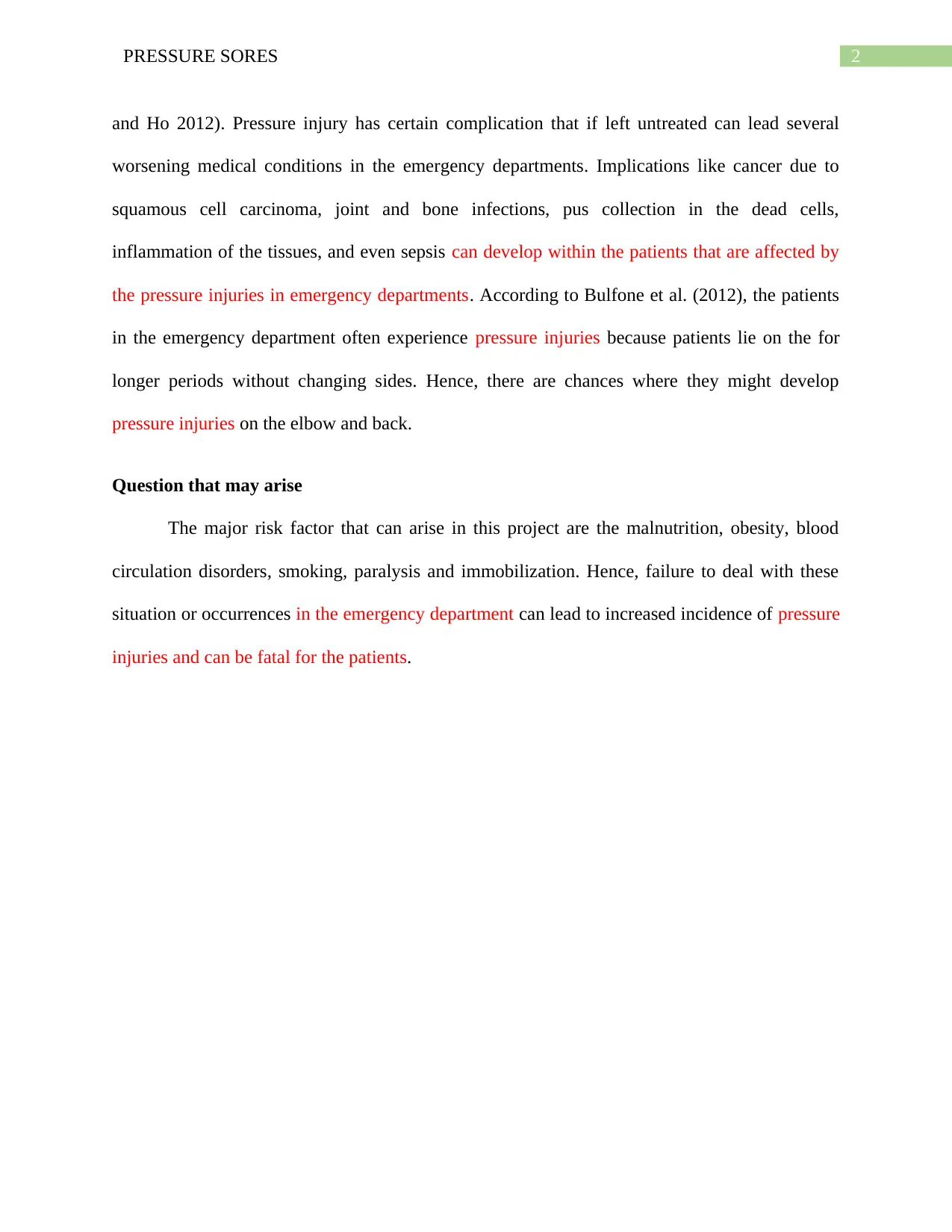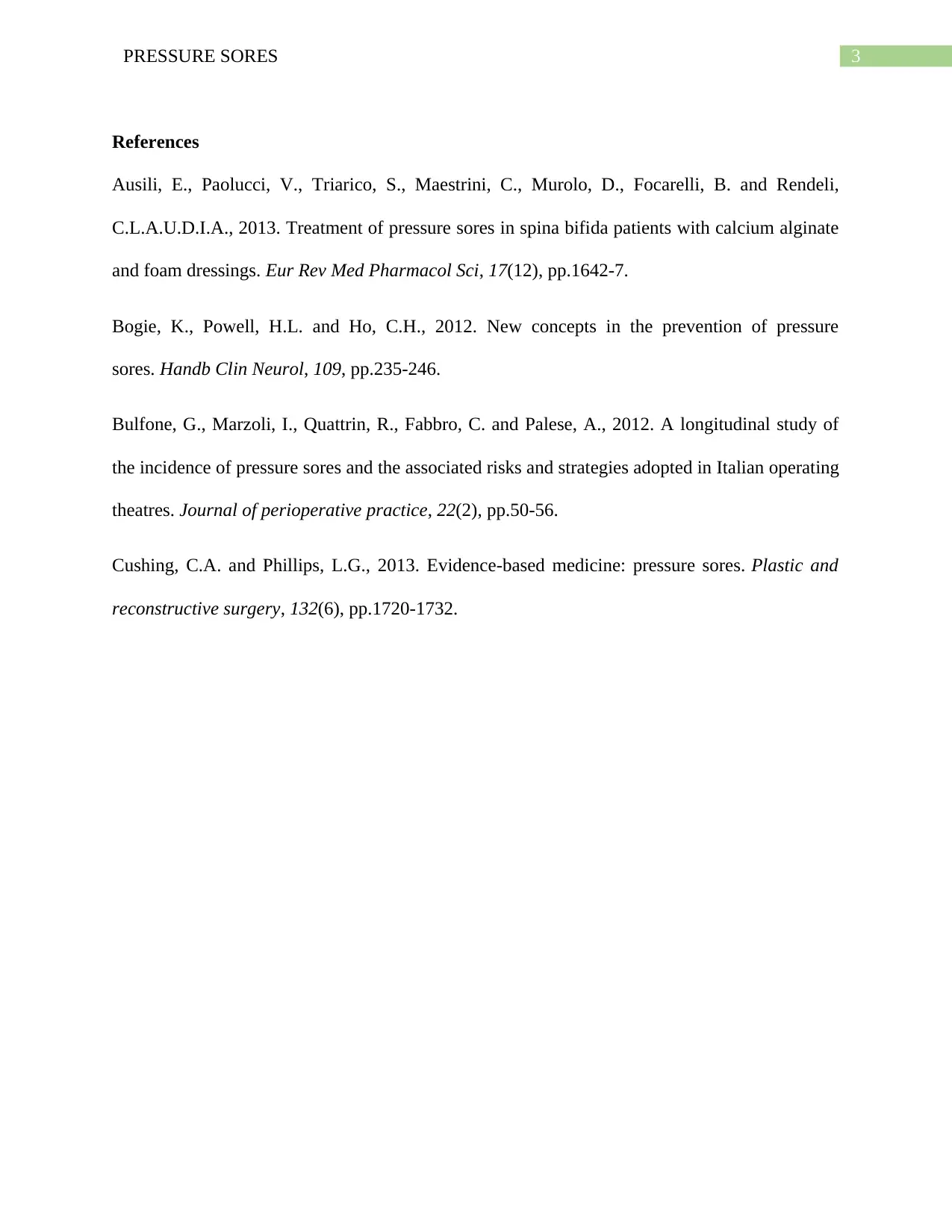Pressure Sore Identification and Prevention in Emergency Departments
VerifiedAdded on 2020/04/15
|4
|728
|45
Report
AI Summary
This report focuses on pressure sore identification and prevention within emergency departments. It addresses the prevalence of pressure injuries, commonly known as pressure sores, among immobile patients, particularly the elderly and those confined to beds or wheelchairs. The report highlights the importance of early identification through skin discoloration and tissue damage, while emphasizing preventative measures such as skin care, dietary adjustments, support devices, and postural changes. It justifies the need for nurses to be knowledgeable in this area due to the potential for complications like infections and sepsis. The report also acknowledges potential risk factors such as malnutrition, obesity, and circulation disorders and cites relevant literature to support its findings and recommendations.
1 out of 4









![[object Object]](/_next/static/media/star-bottom.7253800d.svg)